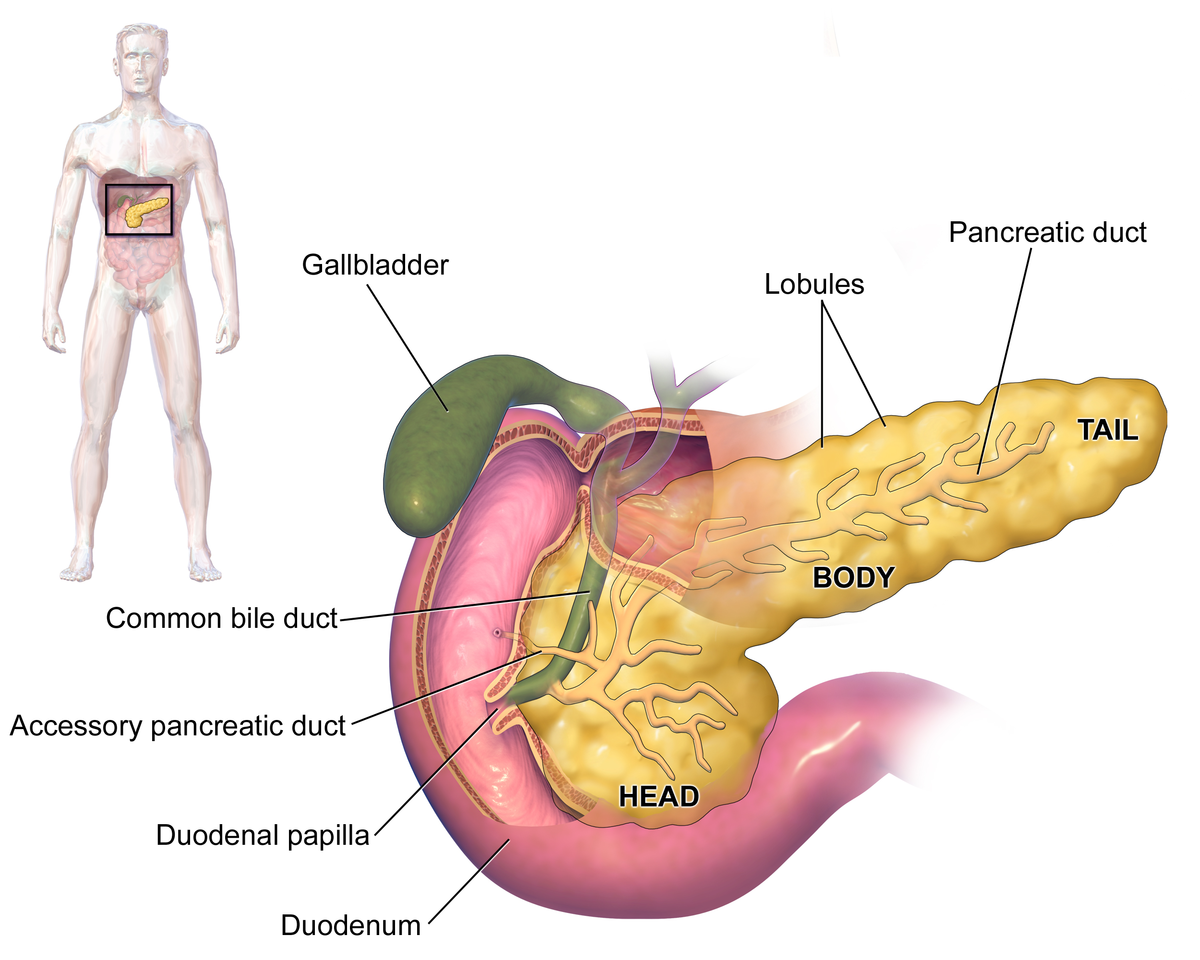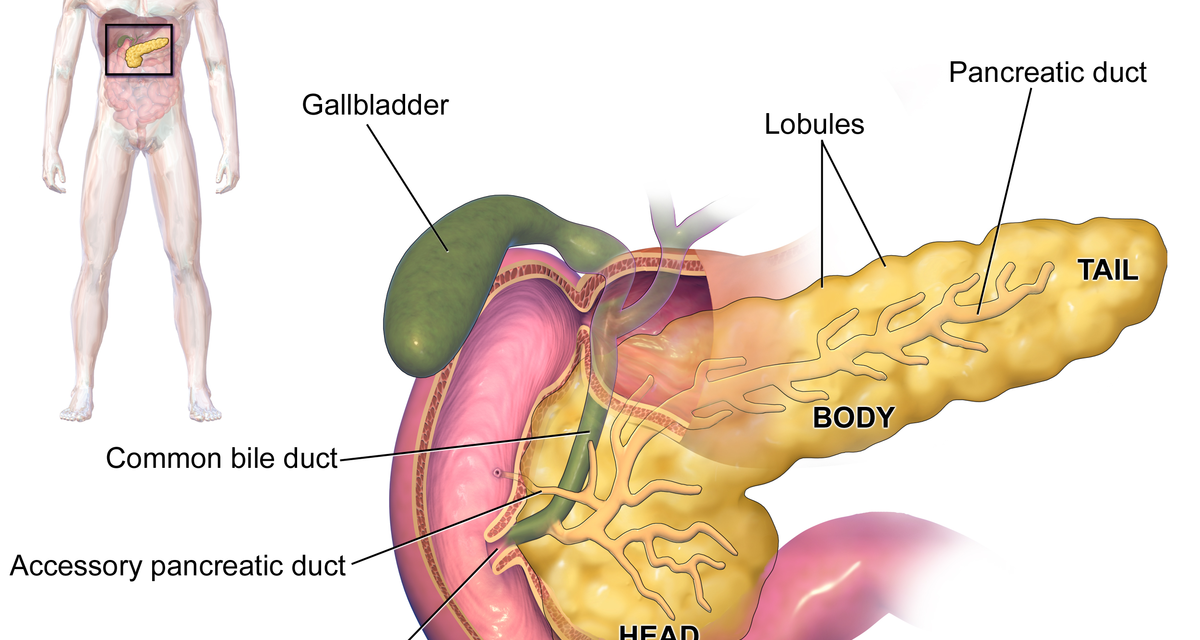The pancreas is an organ in the back of your abdomen (belly). It is part of your digestive system.
The pancreas is an organ and a gland. Glands are organs that produce and release substances in the body.
The pancreas performs two main functions:
- Exocrine function: Produces substances (enzymes) that help with digestion.
- Endocrine function: Sends out hormones that control the amount of sugar in your bloodstream.
Get enough knowledge about the pancreas with Pritish articles.
What is the exocrine system?
The exocrine system consists of glands that make substances that travel through a duct (tube). Besides the pancreas, the exocrine system includes:
- Lacrimal glands (tear glands).
- Mammary glands.
- Mucous membranes.
- Salivary glands.
- Sebaceous (oil) glands.
- Sweat glands.
What is the endocrine system?
The endocrine system consists of glands that release hormones into your blood. These glands control many of your body’s functions.
Besides the pancreas, your endocrine system includes the:
- Adrenal glands.
- Hypothalamus.
- Ovaries and testes.
- Parathyroid and thyroid gland.
- Pineal gland.
- Pituitary gland.
- Thymus.
FUNCTION
What does your pancreas do?
An exocrine gland runs the length of your pancreas. It produces enzymes that help to break down food (digestion). Your pancreas releases the following enzymes:
- Lipase: Works with bile (a fluid produced by the liver) to break down fats.
- Amylase: Breaks down carbohydrates for energy.
- Protease: Breaks down proteins.
When food enters your stomach:
- Your pancreas releases the pancreatic enzymes into small ducts (tubes) that flow into the main pancreatic duct.
- Your main pancreatic duct connects with your bile duct. This duct transports bile from your liver to your gallbladder.
- From the gallbladder, the bile travels to part of your small intestine called the duodenum.
- Both the bile and the pancreatic enzymes enter your duodenum to break down food.
How does the pancreas affect blood sugar?
The endocrine glands in your pancreas release hormones that control blood sugar (glucose). These hormones are:
Insulin: Reduces high blood sugar levels.
Glucagon: Increases low blood sugar levels.
Your body needs balanced blood sugar to help with your kidneys, liver and brain. Your heart and circulatory system and nervous system also need balanced levels of insulin and glucagon to function.
Can a person live without a pancreas?
Yes, you can live without your pancreas. However, you will need to take enzyme pills to digest food and insulin shots to control your blood sugar for the rest of your life. Though pancreatic removal is rare, surgeons may remove your entire pancreas if you have pancreatic cancer, major injury to your pancreas or severe pancreatitis.
ANATOMY
Where is the pancreas?
Your pancreas sits behind your stomach and in front of your spine. Your gallbladder, liver and spleen surround your pancreas.
The right side of your body contains the head of your pancreas. This narrow organ lies along the first segment of your small intestine, called the duodenum. The left side of your body houses the tail of your pancreas.
How big is the pancreas?
The pancreas is about 6 inches long. It’s about the length of your hand.
What are the parts of the pancreas?
The pancreas anatomy includes:
- Head: The wider part of the pancreas that sits in the curve of your duodenum.
- Neck: The short part of the pancreas extending from the head.
- Body: The middle part of the pancreas between the head and neck, which extends upward.
- Tail: The thinnest part of the pancreas, located near your spleen.

Anatomy of pancreas
How can I keep my pancreas healthy?
You can help reduce your risk of pancreatic conditions by:
- Maintaining a healthy weight. Regular exercise and avoiding weight gain can help prevent Type 2 diabetes and gallstones that can cause pancreatitis.
- Eating a low-fat diet. High fat intake can lead to gallstones, which can cause pancreatitis. Being overweight is also a risk factor for pancreatic cancer.
- Watching your alcohol intake. Drinking alcohol can increase your risk of pancreatitis and pancreatic cancer.
- Quitting smoking. Using tobacco, along with cigar smoking and smokeless tobacco products, can raise your risk of pancreatic cancer and chronic pancreatitis.
- Getting regular checkups. Seeing your healthcare provider for regular exams can help find early signs of conditions such as pancreatic cancer and pancreatitis.










